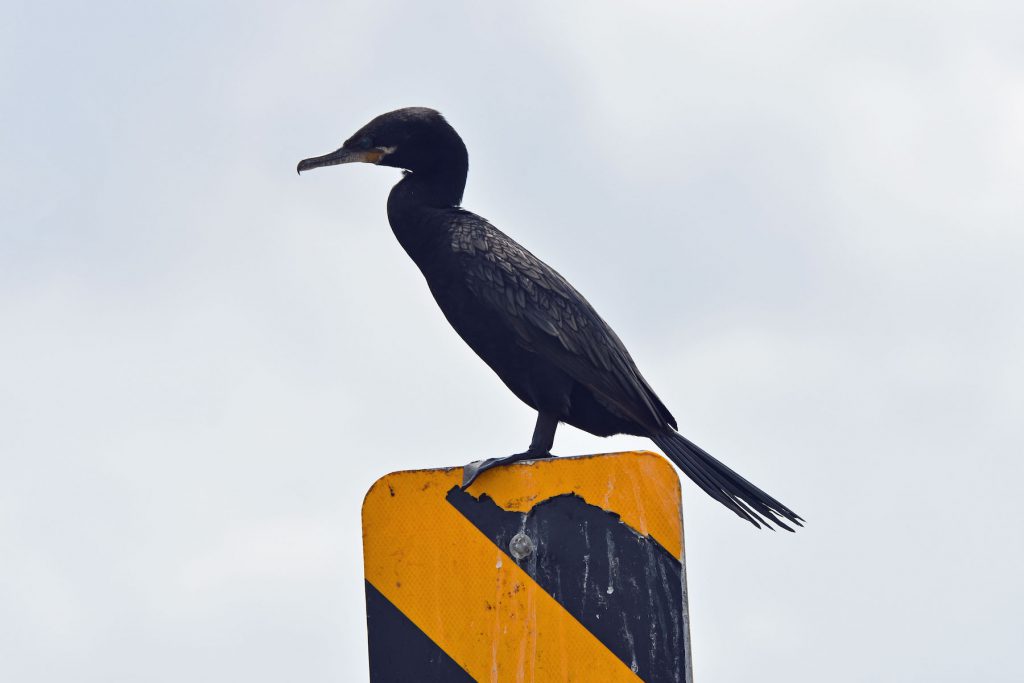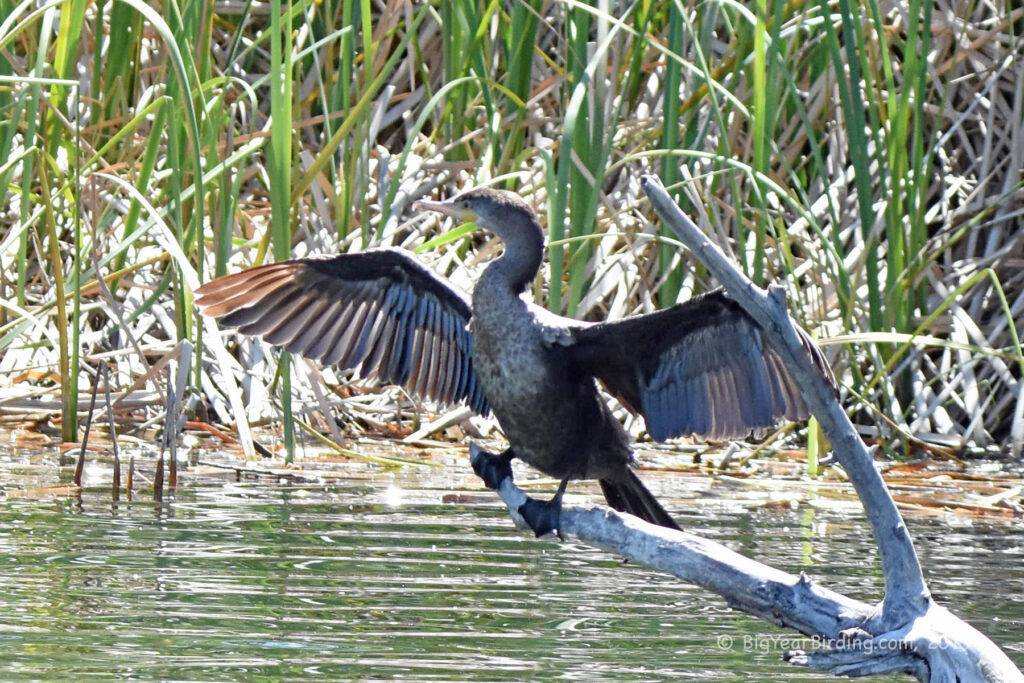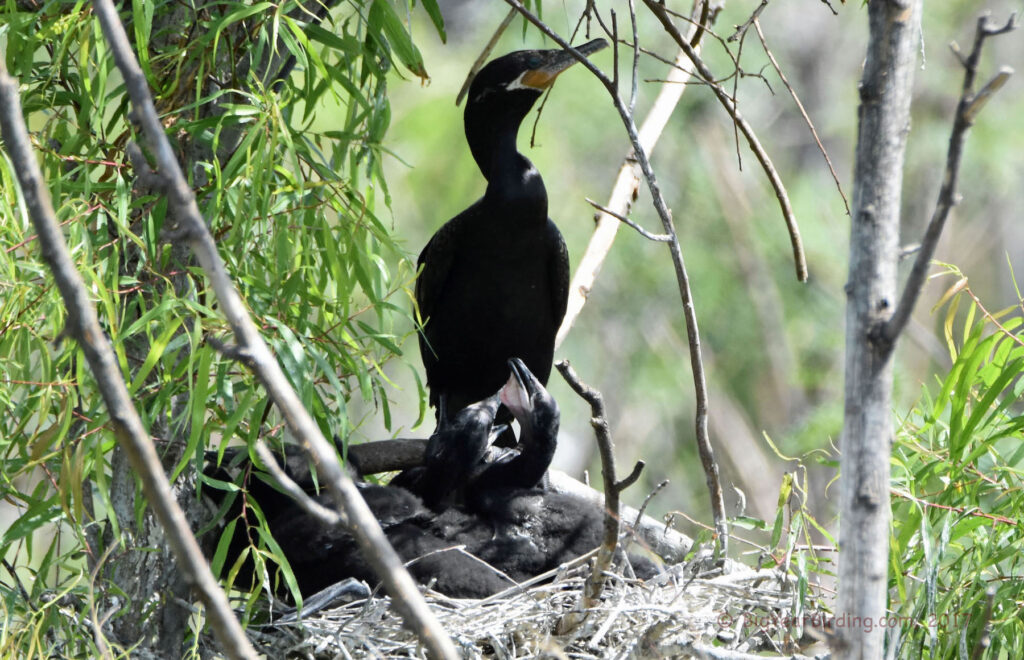
The Neotropic Cormorant (Phalacrocorax brasilianus) is a small to medium-sized bird that can be found in various freshwater habitats throughout the Americas. Adult Neotropic Cormorants typically measure between 22-26 inches in length and have a wingspan of approximately 35-40 inches. These birds are relatively lightweight, with the average weight of an adult Neotropic Cormorant ranging between 1.5-2.5 pounds.
 Distinguishing field marks of the Neotropic Cormorant include their dark, glossy feathers and long, slender necks. They have a relatively short tail, and their bills are hooked and pointed. Additionally, during breeding season, males develop a white patch on their throats, which distinguishes them from females.
Distinguishing field marks of the Neotropic Cormorant include their dark, glossy feathers and long, slender necks. They have a relatively short tail, and their bills are hooked and pointed. Additionally, during breeding season, males develop a white patch on their throats, which distinguishes them from females.
While some populations of Neotropic Cormorants are migratory, others are resident and do not migrate. Those populations that do migrate are known to move from their breeding grounds in the southern United States and Mexico to areas in South America for the winter. The exact timing and duration of their migrations can vary depending on the location and population.
Neotropic Cormorants are primarily piscivorous, feeding on a variety of fish species. They are known to swim and dive underwater to catch their prey, using their feet and wings to propel themselves. Neotropic Cormorants are also known to forage in groups, often working together to drive fish into shallow water where they can be easily caught.

Despite their relatively common status, Neotropic Cormorants face a variety of threats, including habitat loss and degradation, water pollution, and hunting. Conservation efforts are ongoing to protect these birds and their habitats, including measures to restore degraded wetlands and regulate hunting and fishing practices.

